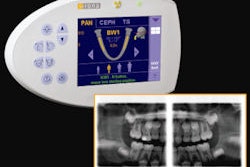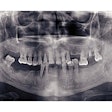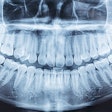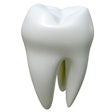Lantis Laser has signed an exclusive agreement with the Regents of the University of California for a light-based technology referred to as near-infrared (NIR) transillumination imaging of early dental decay, the company announced.
The technology is the subject of a patent pending application and was researched and developed over the past five years under the direction of Daniel Fried, Ph.D., a professor of biomaterials and bioengineering in the department of preventive and restorative dentistry at the University of California, San Francisco School of Dentistry.
"NIR imaging is the perfect technology to integrate with Lantis' OCT dental imaging system, currently under development, as it can be used to screen for decay and defects in teeth, and OCT can then be used to obtain more detailed microstructural information to aid in diagnostic decisions," said Stan Baron, president and CEO of Lantis, in a press release.
OCT can generate images of both teeth and gums, while NIR can only be used to image teeth above the bone line, the company said.
Research indicates that NIR imaging as a screening modality provides significantly more detailed information, particularly on the occlusal (biting) surfaces, than currently used x-ray (digital or conventional), added Craig Gimbel, D.D.S., clinical director at Lantis.
"We have been aware of the benefits of NIR technology for some time and recent advancements in sensor technology now make commercialization possible, at an economic cost," Dr. Gimbel said in the press release. "We feel that we have reached the point where the full potential of light-based diagnostic imaging technology can now be exploited to create highly advanced and economical diagnostic imaging modalities for dentistry."
Lantis expects the NIR imaging system to be commercially available in 2010. It will be integrated with the company's OCT dental imaging system and be available as a standalone system.
Copyright © 2009 DrBicuspid.com


















